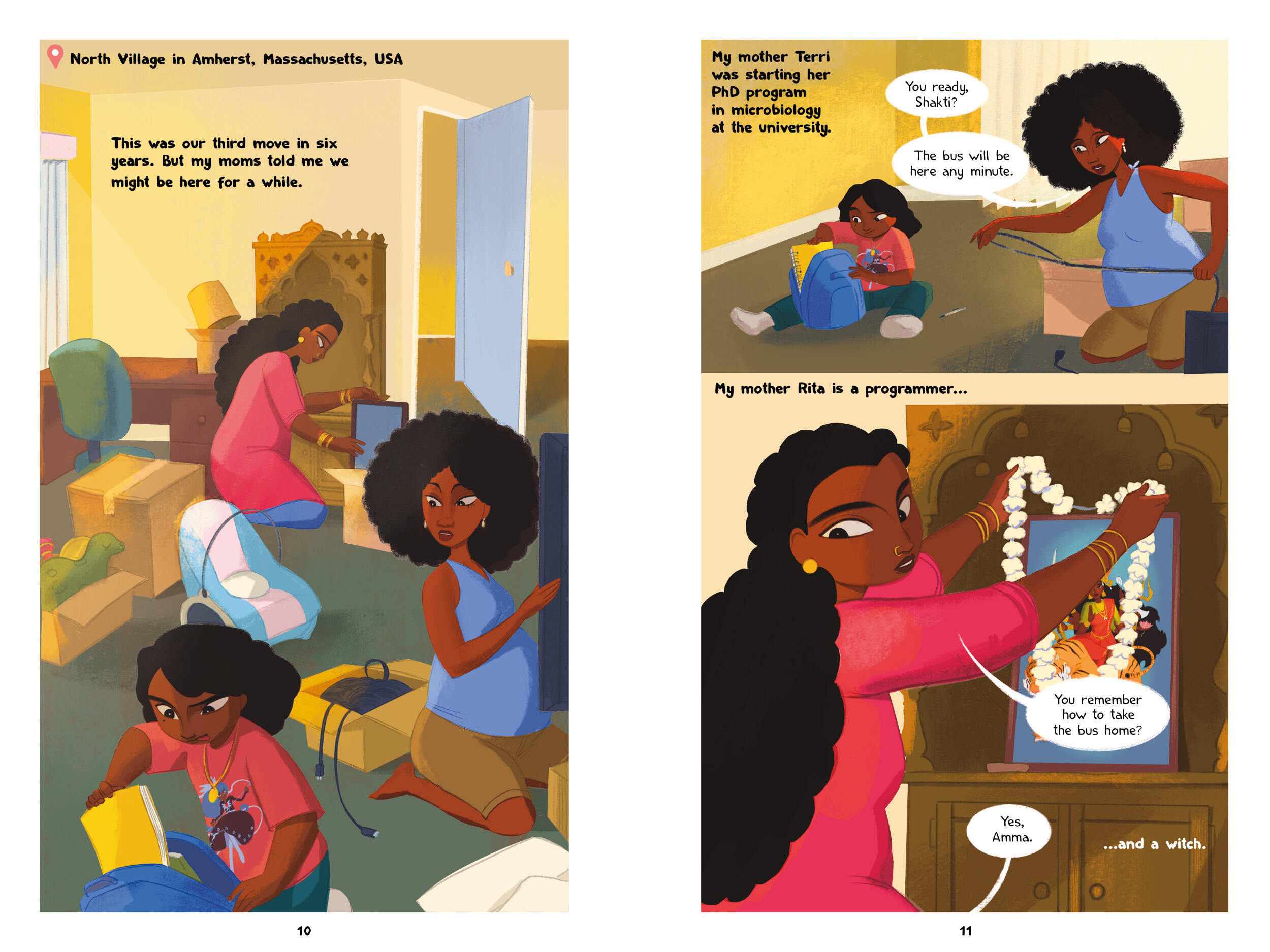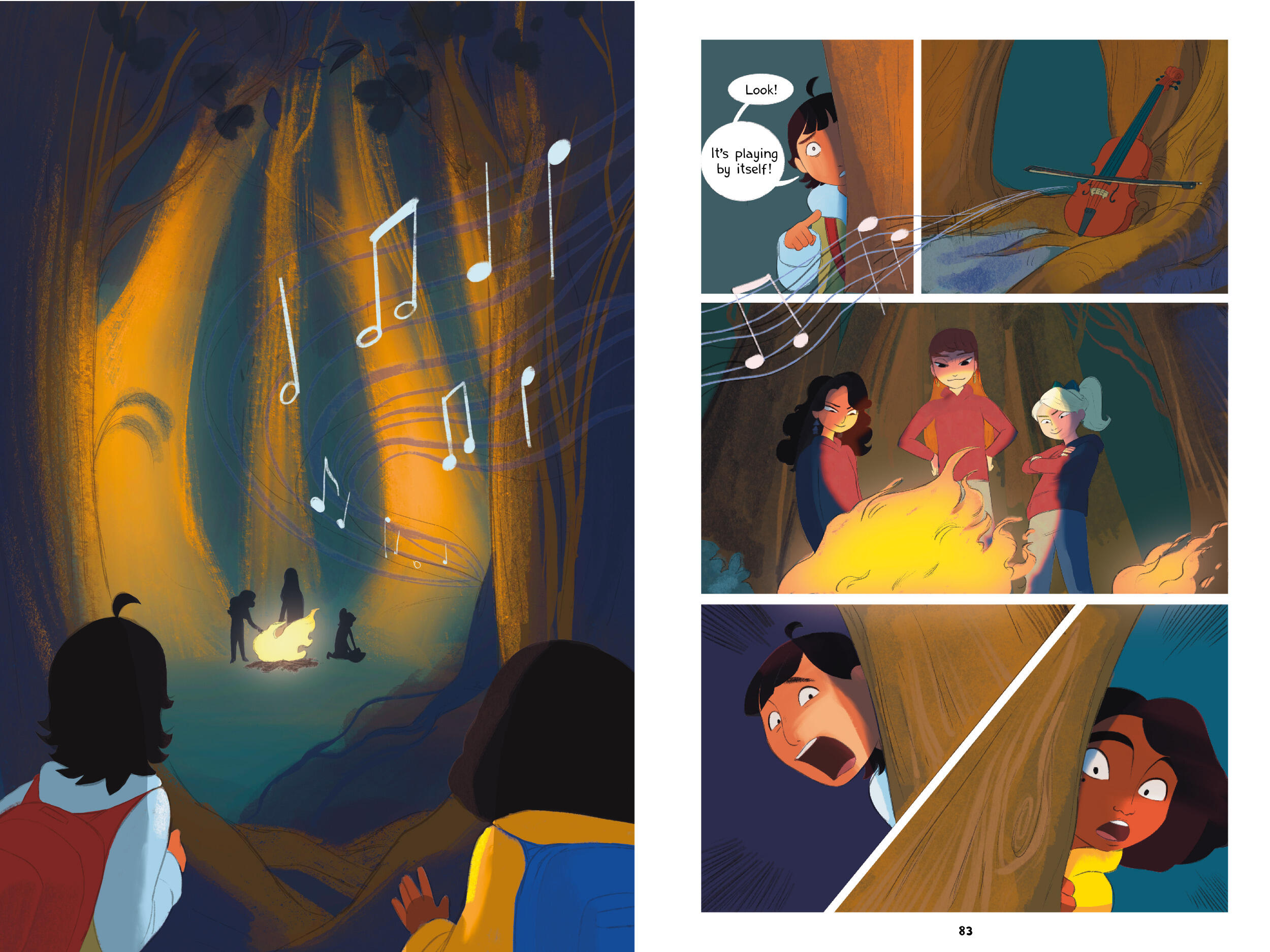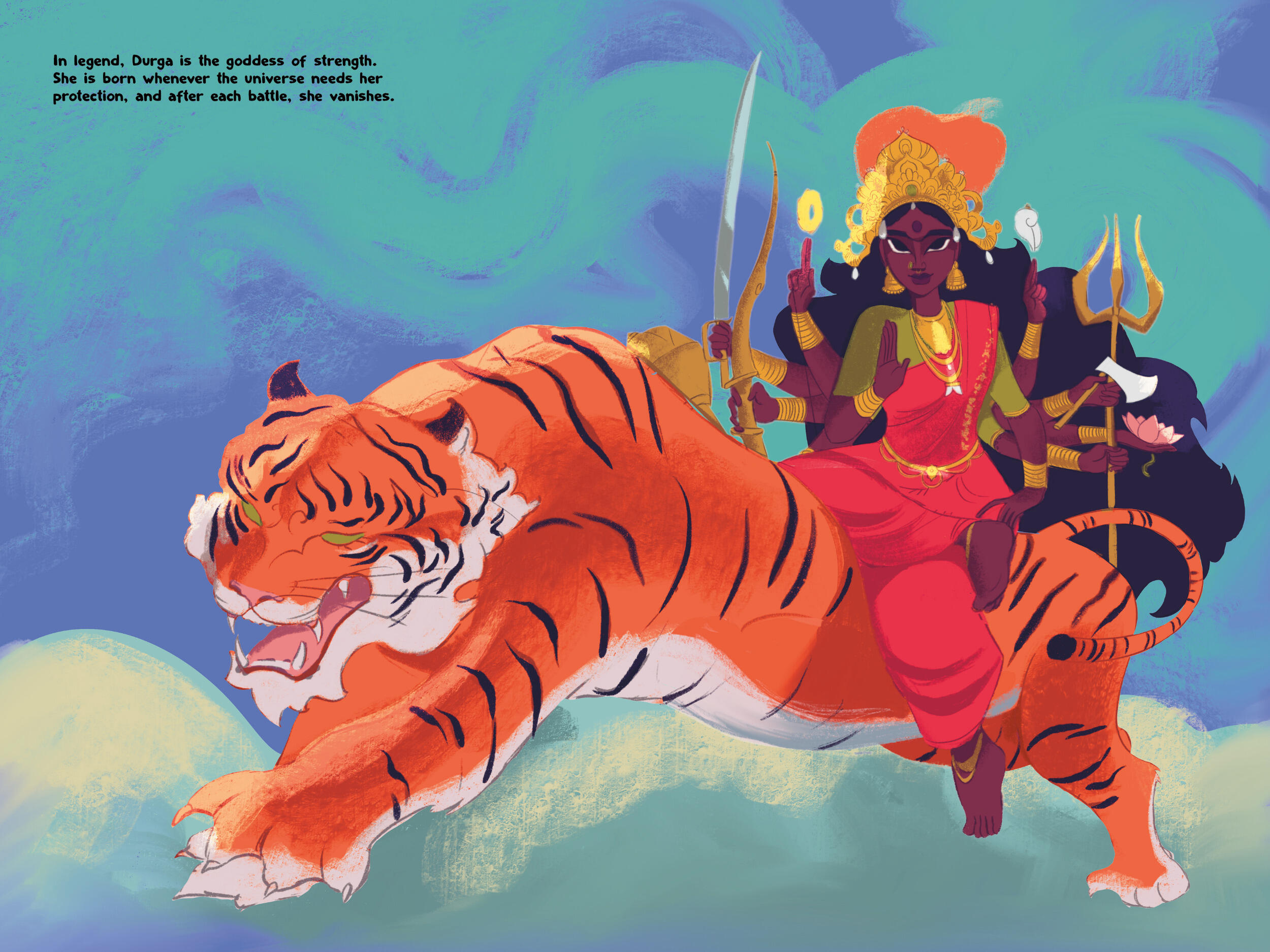
May 26, 2023
With graphic novel ‘Shakti,’ SJ Sindu shares ‘the kind of story that I wanted to have’ as a child
Share this story
When SJ Sindu came to the U.S. from Sri Lanka as a 7-year-old in 1995, the books and shows she consumed while learning English brought action and adventure into her world. “Neon Genesis Evangelion,” “D.N.Angel” and “Dragon Ball Z” became inspirations. She learned to draw so she could create “Sailor Moon” comics with her own flair. Those self-made comics helped fill the gaps of the representation that was missing from what she read and watched.
“I wanted to find a way to merge those things – the adventure and the visual elements of shoujo manga – and bring those two together with a more international perspective, looking at darker-skinned characters, characters who are visually different, pulling from South Asian mythology and South Asian heritage and sort of mashing it all together,” Sindu said. “I started doing that when I was young, and it just never really left me, I guess. I’m still kind of trying to do that.”
Those early endeavors in visual storytelling have come full circle. Sindu, Ph.D., an assistant professor in the Department of English in Virginia Commonwealth University’s College of Humanities and Sciences, released “Shakti” (Harper Collins), their first graphic novel and first middle-grade book, with illustrator Nabi H. Ali this week.
Sindu, who teaches in VCU’s MFA in Creative Writing program, has written several fiction books, including the novels “Marriage of a Thousand Lies” and “Blue-Skinned Gods.” Sindu spoke with VCU News about “Shakti,” the importance of giving visual representation to Tamil mythologies and characters from Tamil or LGBTQIA+ communities, and the advice she hopes young readers take away from the new graphic novel.
Tell us about “Shakti” – the book and the character.
Shakti is a South Asian American girl. She is 11 years old. She is starting seventh grade in a brand new town, and she and her two moms are moving to Amherst, Massachusetts, to start a new life. Shakti starts going to school and discovers that there’s something really off at her school. These three mean girls have the entire school under a spell. Shakti’s mom is actually a witch, and Shakti starts to learn magic along with her friend Xi to defeat these witches.

What inspired you to write this story?
I moved to the U.S. from Sri Lanka when I was 7, and this was in 1995. I didn’t know English, so I was learning English through reading stories, mostly. And because I was a new learner, I was reading picture books, and then I graduated to comics. I loved fantasy, and I loved magic and swords and adventure, but I never saw anyone like me in those stories. I never saw the magic ever reflect my heritage or where I come from. So I wanted to write the kind of story that I wanted to have at that age, when I was 8, 9, 10, 11.
What led you to go with a graphic novel to share this story, and how could that impact readers?
I started out writing “Shakti” as a prose book, because that’s mostly what I do is prose fiction. But it just somehow wasn’t working. It didn’t quite feel right, so I started to think about different ways to deliver the story – and as soon as I started writing it as a graphic novel, it just clicked. Everything just clicked visually. Shakti derives her power from two Hindu goddesses, Durga and Kali, and just having that sort of cosmic element, the mythology element, all of it just worked better in a visual space.
I think part of [the drive to create this as a graphic novel] is representation, to have that actual visual element of a South Asian character looking back at you. I consumed a lot of Disney and manga and anime and graphic novels when I was young. And for me, that visual element is really, really important in representation. Yes, it’s important to see yourself in print, in characters in prose, but it’s even more important to see that visual depiction of yourself and of your culture and of your heritage, and that’s what I wanted with “Shakti.”
I wanted to have an actual South Asian character and a lot of diversity actually on the page. Shakti’s friends are of different ethnicities. One of her moms is Black. And I wanted to actually have that visual depiction of darker skin, of different cultural traditions. They go to Durga Puja, which is a Hindu festival, and everyone’s in saris. There are a lot of cultural things that are going on in the background, and I wanted to bring that to the page in a visual way.
Your book ties in with themes in your other works – it’s a story that centers the lived experiences of those within the Tamil diaspora and that touches on LGBTQIA+ identities. Tell us more about those themes and why you want to reach middle-grade readers.
I think I’m just trying to go back in time and give myself the stories I needed. And that’s been a perpetual theme in my work and obsession in my work for a long time. I grew up really without any mirrors around me. Not that mirrors are the end-all be-all – visual representation is not the end-all be-all of having an inclusive and diverse society. But at the same time, when you’re really young and you’re watching and consuming a lot of Disney and children’s media, when that representation doesn’t exist, it really does make you feel like an outsider. And that’s something I write about a lot is outsiders in various different ways – loners and artists, outsiders because of different identities that people might have.
I think there’s been a lot of representation lately in the adult literary space with South Asian narratives. A lot of big awards have been given to South Asian novels. The New York Times has covered South Asian literary novels, but I still don’t see a lot of that in the middle-grade and YA space. We definitely don’t see it on TV or in the movies, especially with children’s media. So I think putting my efforts into YA and middle-grade has been a recent interest of mine because it doesn’t seem to quite exist in the same way. And if it does, the representation in the children’s space seems really reductive and very simple and does not reflect the kind of diversity that even South Asian identities have.
South Asia is a large space, and mostly it’s dominated by Indian and Pakistani narratives, especially North Indian and Pakistani narratives. And people from places like Sri Lanka, Bangladesh – we’re not represented very well, especially with Tamil identity. Tamil identity is a very specific thing, and linguistically, ethnically, culturally, religiously sometimes, it’s a very unique space. And I wanted to bring that to the middle-grade and YA space because I don’t really see it there.

What takeaways from “Shakti” do you hope readers will have?
I hope that young readers especially learn something about handling bullying. There’s that theme of dealing with bullying in the book. There’s also themes of friendship and dealing with feelings that might be negative or might be perceived as negative in your life. So Shakti deals a lot with anger, and that’s a huge thematic element in the book is how to deal with anger or how to view anger. And often we’re told that anger is a bad thing, but anger can be really powerful. It can be outrage; it can help you change the world. Part of the goal of this book is to reframe anger as a positive emotion and to hopefully help kids think about their own anger in different ways.
What advice would you give to young readers facing the types of challenges Shakti faces?
It’s really important to consider when you’re young – and it’s really hard to understand when you’re young – that things change and that experiences are fleeting, negative or positive. Any joy is not going to last, and also any pain is probably not going to last. When you’re young, it feels like a huge amount of time, but it really isn’t. And that’s important, to have that perspective that things will change and things will get better, because change is the only constant in life.
One of the negative things about bullying and about feeling like an outsider is that it makes you feel really alone. It makes you feel like you’re the only one. And I think it’s important to reach out to people, to reach out to whoever is the support system in your life. If that’s your family, that’s great. If that’s not your family, then to reach outside of your family – teachers, librarians, other kids who might also be going through the same things.
One of my resources when I was young was the library. I went to the library all the time, and the librarian started to notice that I was always in there and I was always reading, so they’d bring me cookies and they would suggest books for me. Libraries were a really important thing for me growing up. It was a safe space where I could explore things, I could explore topics that I wasn’t allowed to explore at home. I could especially, if I wanted to explore queerness or if I wanted to explore romance or love or things that, when we’re young, feel forbidden – you can do that in a library. There’s just so much knowledge around you. I could read “Animorphs” or “Goosebumps” or whatever was available – it’s like a candy shop of stories, and you can just explore.
Libraries are a great resource when you’re feeling like the world is against you, because you can just immerse yourself in a story. And that escapism can be really important and can also give you experiences that you would not have otherwise.

Subscribe to VCU News
Subscribe to VCU News at newsletter.vcu.edu and receive a selection of stories, videos, photos, news clips and event listings in your inbox.







